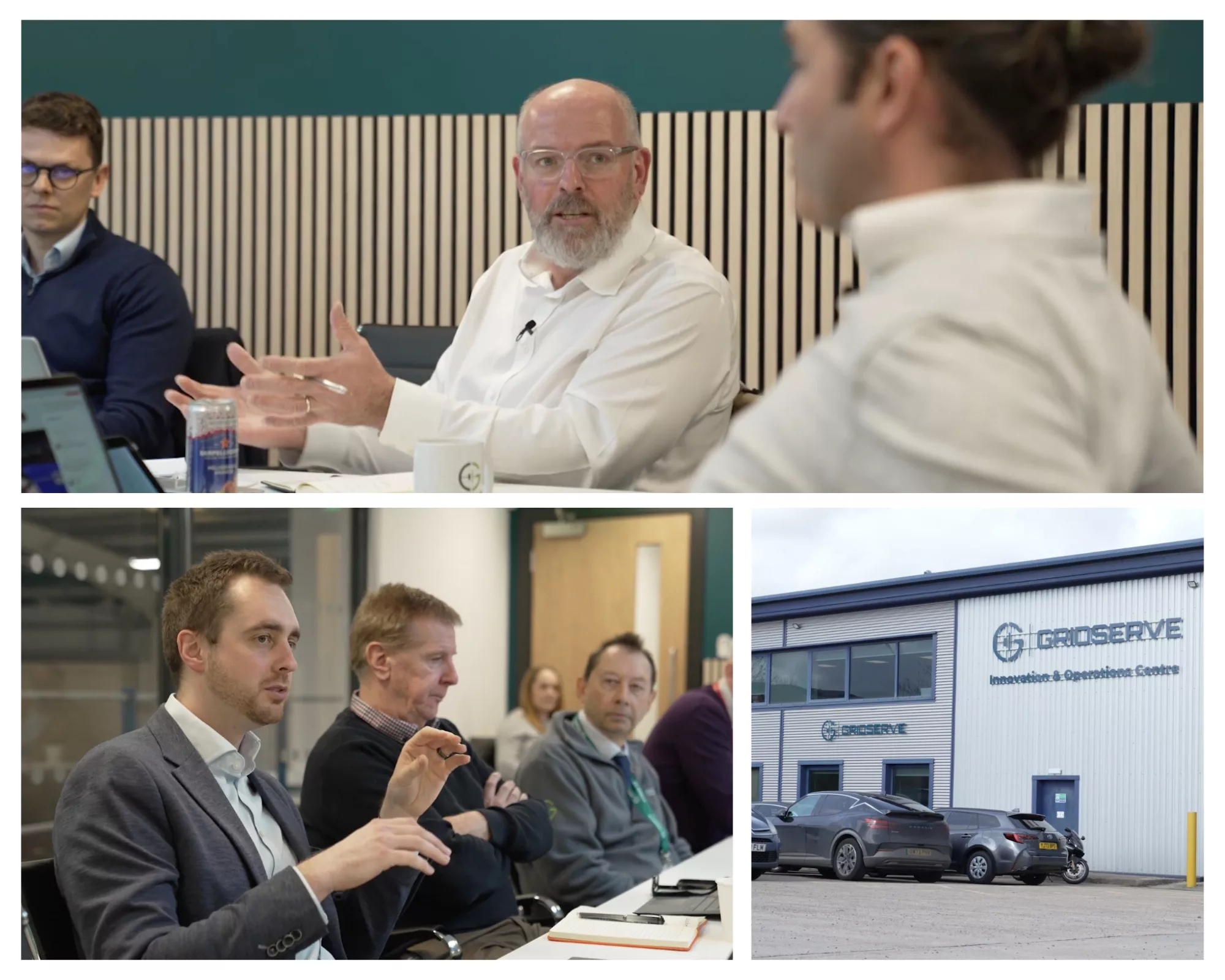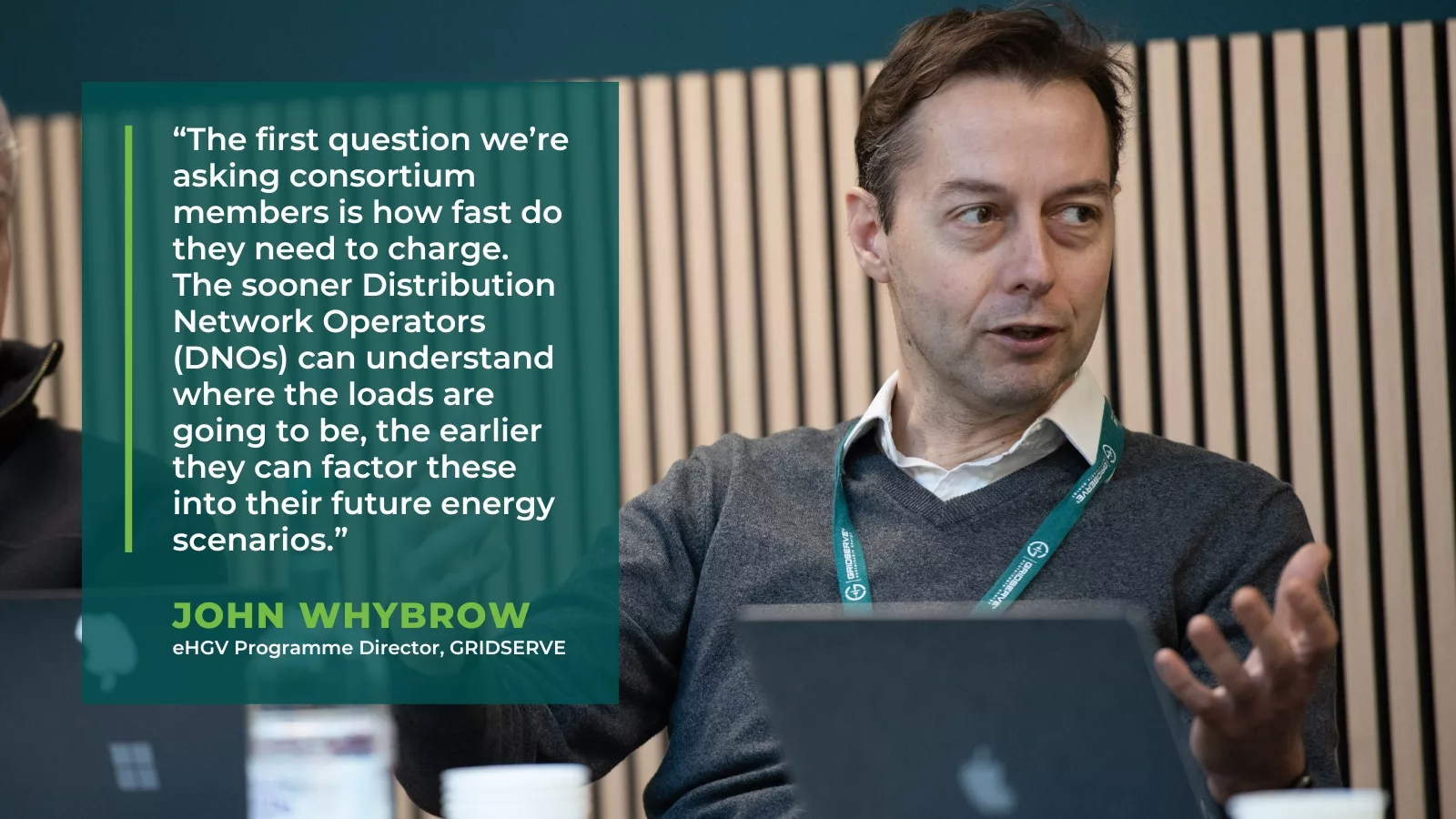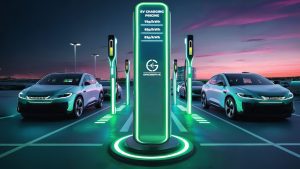

Stakeholders of the Electric Freightway programme gathered at the GRIDSERVE Innovation and Operation Centre in March to discuss both progress and pinch points to date.
Funded by the Department for Transport and delivered in partnership with Innovate UK, Electric Freightway aims to lay the foundations for the biggest and most advanced electric Heavy Goods Vehicle (eHGV) charging network in the world.
Hosted by Andy Salter, managing director of DVV Media International, attendees learned that logistics and haulage consortium members have already pushed orders for electric Heavy Goods Vehicles (HGVs) into double digits, with first deliveries taking place in May. And while no charging infrastructure has yet been deployed, the Electric Freightway team is working with principal partner Hitachi ZeroCarbon to summarise operator requirements and identify the first depot and public charging locations that can be delivered before June 2025.
 Once the eHGVs are on the road and chargers installed, Hitachi ZeroCarbon will analyse routes, vehicle and charging session data, range and charging infrastructure monitoring, and evidence-based Total Cost of Ownership (TCO) modelling to support investment business cases for future eHGV deployments.
Once the eHGVs are on the road and chargers installed, Hitachi ZeroCarbon will analyse routes, vehicle and charging session data, range and charging infrastructure monitoring, and evidence-based Total Cost of Ownership (TCO) modelling to support investment business cases for future eHGV deployments.
“The first question we’re asking consortium members is how fast do they need to charge,” explains John Whybrow, eHGV Programme Director for GRIDSERVE. “There is a huge difference between the amount of power required to charge six vehicles overnight versus six vehicles that need to double-shift and therefore only have a narrow window to recharge. The power requirements of the latter often requires a substation to support, which adds cost, time and complexity. The sooner Distribution Network Operators (DNOs) can understand where the loads are going to be, the earlier they can factor these into their future energy scenarios.”
In addition to power, availability of physical space is another national challenge, particularly for Motorway Service Areas that are already over-subscribed and mandated to provide a minimum number of HGV parking bays. In order to install High Power, island-based charging infrastructure – island-based to avoid chargers being flattened by a 44-tonne articulated eHGV – GRIDSERVE is having to identify and develop fresh parcels of land within existing site boundaries.

“We’re committed to installing 200 chargers over 30 sites,” says Sam Clarke, Chief Vehicle Officer at GRIDSERVE. “However, a lot of the locations we select in the first year will be predicated on what grid connections we already have available or have forthcoming in the timeframe, as well as how much land can be redeveloped to facilitate this game-changing infrastructure.”
Fleet operators are instrumental in driving transport decarbonisation and they don’t get more influential than consortium attendee Stuart Murphy. As Head of Fleet Transformation at Royal Mail, Stuart is responsible for 50,000 vehicles and has already electrified 5,000. Whether it’s for the King or Mr O’Keefe at No20, the post needs to arrive on time, so Royal Mail needs 24-hour access to a reliable charging network. At the moment, Royal Mail relies almost exclusively on depot-based charging as any queuing or technical issues would delay the mail.

For Royal Mail and other commercial operations that rely on contractual deadlines, as well as their vehicle’s battery having the right amount of charge at the right time, GRIDSERVE is developing a booking system to increase the viability of public eHGV charging. The complexity around tacho breaks – where drivers cannot be in control of the vehicle when on a break – as well as the variables that come with operating along congested highways are all being systematically dealt with. For example, how far in advance can a driver book a charging session? When can you cancel? Can you defer to a different time if you’re stuck in a traffic jam? How many times are you allowed to defer?
“Today has been a great introduction to the programme,” says Andy Salter. “There is so much for the industry to learn and a mountain to climb before the 2040 deadline (which sees the end of sale of diesel-powered trucks), so it’s important that we interrogate the Electric Freightway programme to ensure the industry gets the maximum value out of the government’s investment.”




